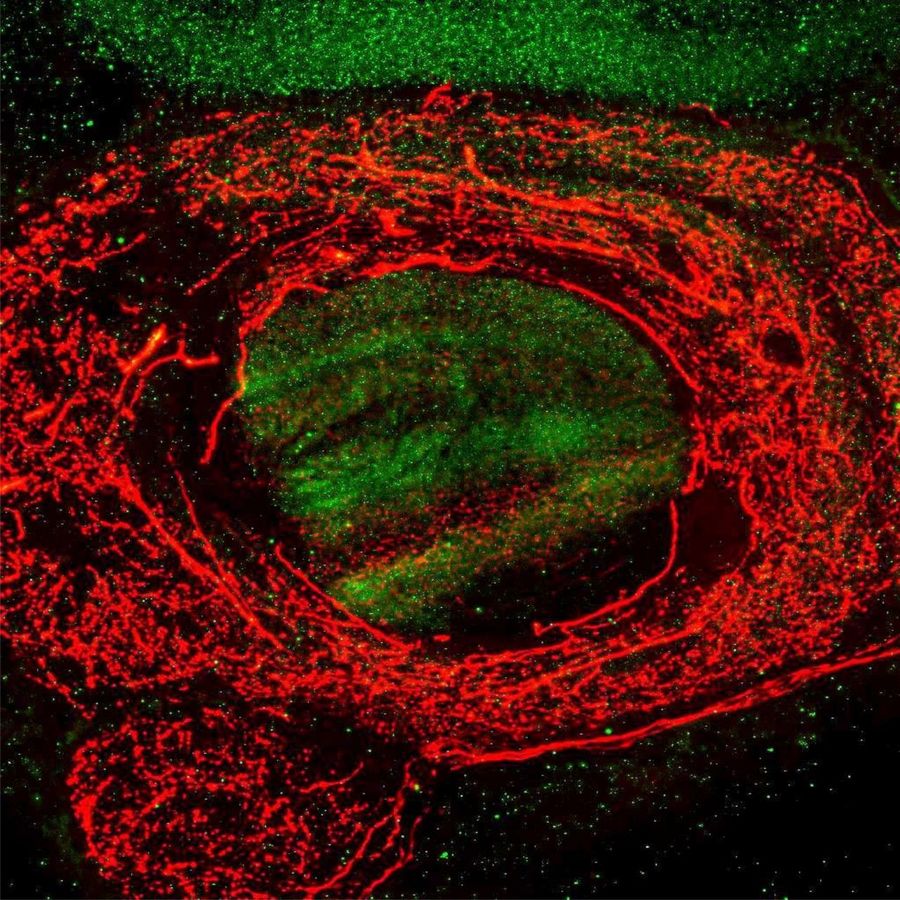Biogenic amines are small organic compounds that act as neurotransmitters, neuromodulators and/or neurohormones in deuterostomes as well as in protostomes.
In insects, the group of biogenic amine messengers consists of five members: dopamine, tyramine, octopamine, serotonin (5-hydroxytryptamine, 5-HT), and histamine.
My research is mainly focused on the molecular and functional characterization of aminergic G protein-coupled receptors (GPCRs) of the honeybee. By this I mean the elucidation of their primary structure, their pharmacological properties, their coupling to intracellular messenger pathways and their expression patterns.
The honeybee Apis mellifera is not only of exceptional ecological importance as a pollinator of flowering plants, but also an established model organism for studying the molecular and cellular basis of learning processes and the division of labor in the insect colony. Biogenic amines and their receptors are significantly involved in the regulation of both phenomena. So far, I have functionally characterized two dopamine receptors (AmDOP1, AmDOP2), two tyramine receptors (AmTAR1, AmTAR2), two octopamine receptor (AmOctαR, AmOctα2R) and four serotonin receptors (Am5-HT1A, Am5-HT2α+β, Am5-HT7) of the honeybee.
My long-term goal is the complete spatio-temporal mapping of all aminergic receptors of the honeybee. Due to the complete decoding of the honeybee genomic sequence the family of biogenic amine receptors is known to comprise 19 representatives in the bee. Furthermore, I plan to assign functions to all these receptors. The honeybee is excellently suited to uncover the functions of biogenic amines in behavior, because it has an extensive behavioral repertoire and many highly specific behavioral tests (e.g., determination of gustatory, visual and olfactory response thresholds, non-associative and associative learning, phototactic behavior) have been established for the bee. In order to attain this objective, I perform targeted behavioral pharmacological experiments.
Publications
- AmOctα2R: Functional characterization of a honeybee octopamine receptor inhibiting adenylyl cyclase activity
Blenau W, Wilms JA, Balfanz S, Baumann, A
Internation Journal of Molecular Sciences. 2020 Dec;21(24):9334.
DOI: 10.3390/ijms21249334 - Function and distribution of 5-HT2 receptors in the honeybee (Apis mellifera)
Thamm M, Rolke D, Jordan N, Schiffer C, Baumann A, Blenau W
PLoS ONE. 2013 Dec;8(12):e82407.
DOI: 10.1371/journal.pone.0082407 - Characterization of the 5-HT1A receptor of the honeybee (Apis mellifera) and involvement of serotonin in phototactic behavior
Thamm M, Balfanz S, Scheiner R, Baumann A, Blenau W
Cellular and Molecular Life Sciences. 2010 Mar;67:2467-2479.
DOI: 10.1007/s00018-010-0350-6
